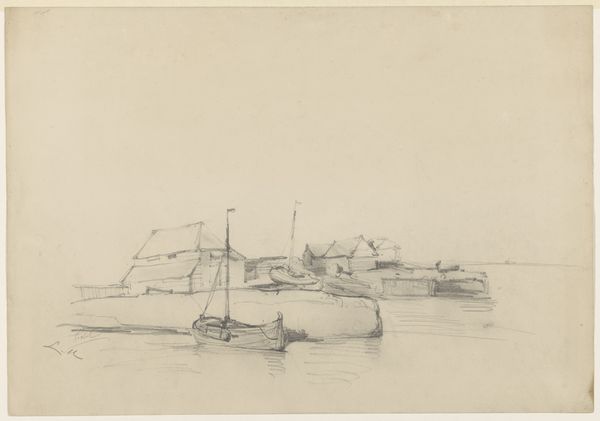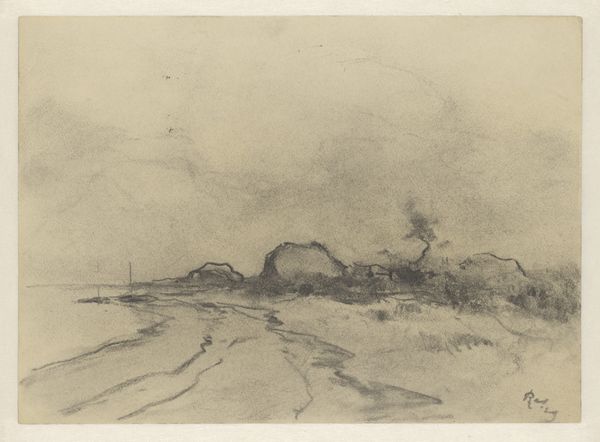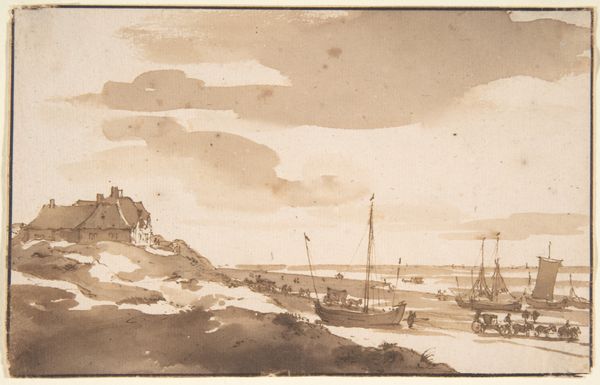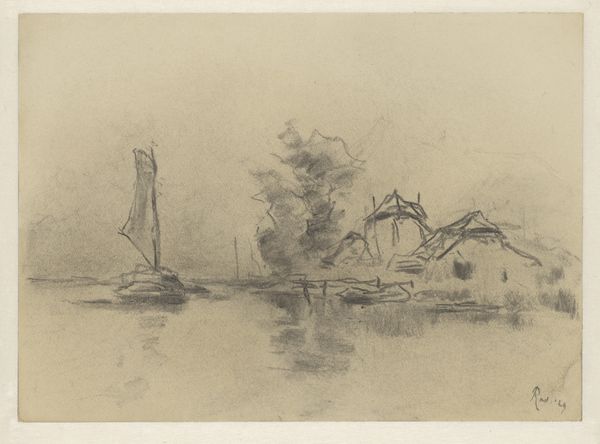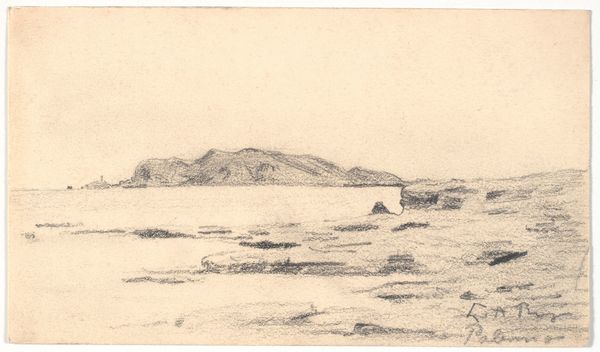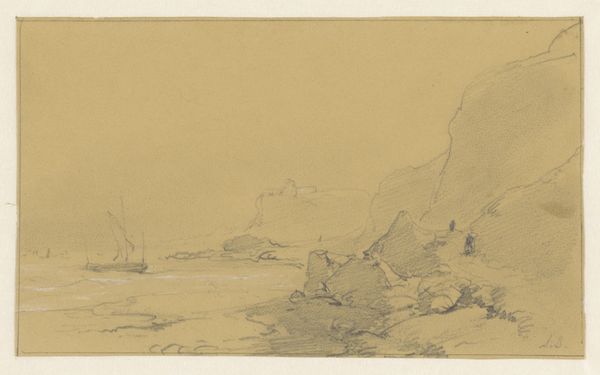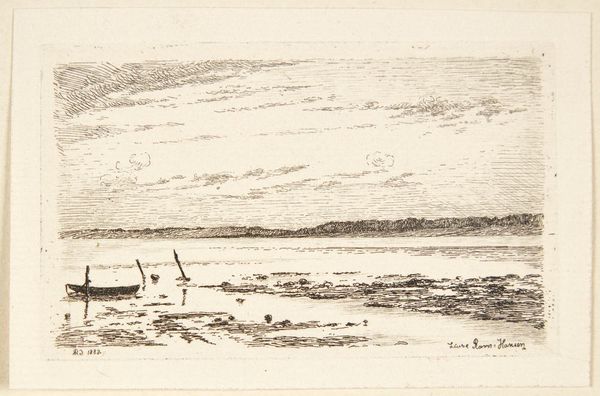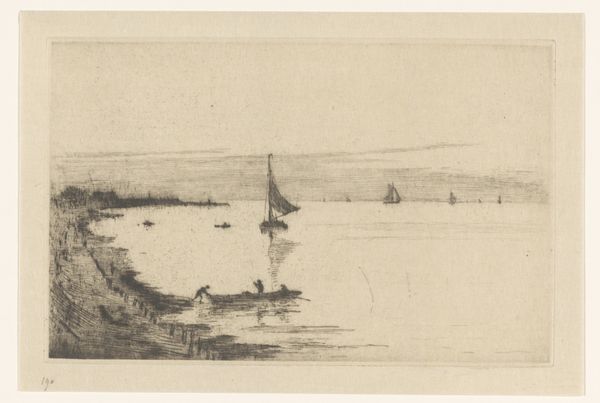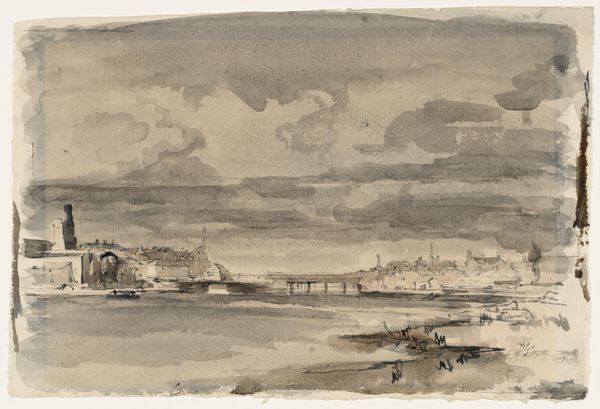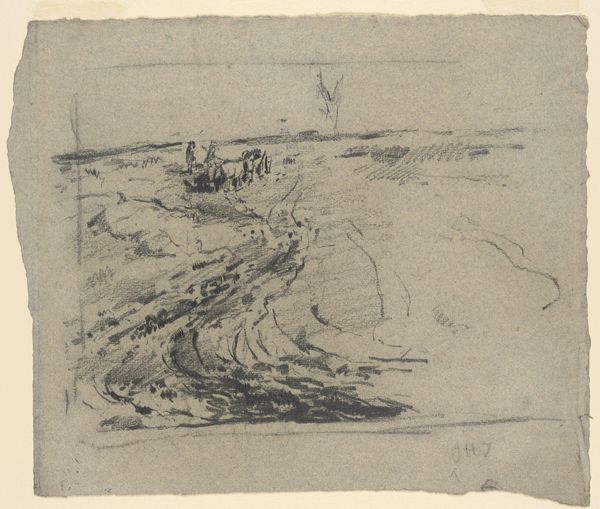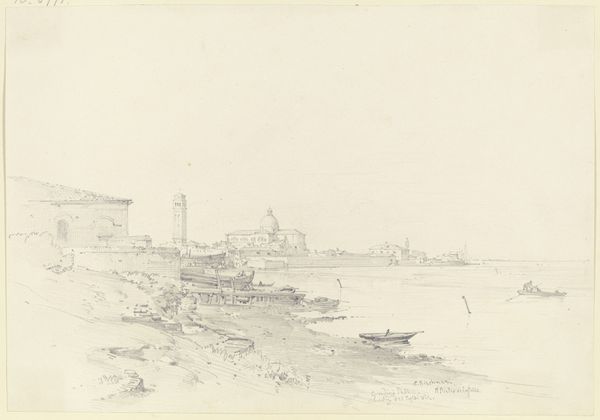
drawing, pencil
#
drawing
#
pencil sketch
#
landscape
#
pencil
#
pencil work
#
realism
Dimensions: height 246 mm, width 339 mm
Copyright: Rijks Museum: Open Domain
Curator: Here we have Pieter H.J.J. Ras’s 1930 pencil drawing, “Water, wijde lucht,” which translates to "Water, Wide Sky," currently residing here at the Rijksmuseum. Editor: It’s immediately striking how somber the overall tonality is. The grayscale values create a melancholic mood; it's quite bleak, isn’t it? Curator: I think that aligns with a broader historical understanding of the period. The 1930s were marked by economic depression and growing political instability. Consider Ras, as a Dutch artist grappling with these societal anxieties – how might the wide, oppressive sky mirror the weight of those concerns? Editor: That's valid, but I am more drawn to how Ras uses the pencil to achieve such textural variety. Look at the way the sky seems almost smudged, contrasting with the sharper lines defining the buildings. Semiotically, this evokes an opposition between the mutable sky, and the permanence of built structures. Curator: Precisely, and that tension can also be understood through a feminist lens. The landscape genre traditionally assigns passive, feminine qualities to nature, while architecture often embodies masculine control and dominance. Is Ras subverting this dynamic? Editor: That's one interpretation, but the composition draws my eye in, regardless. See how the placement of the horizon, high in the frame, privileges the atmospheric condition. Curator: I can certainly see your point. Furthermore, looking at that little boat pulled up on the shore, I imagine the people who lived and worked in that setting and under those skies. Perhaps the limited detail is actually allowing space to think more deeply about these communities. Editor: A compelling idea. The piece does seem to evoke something larger, something about being human. Curator: Agreed, the piece reflects that very human connection to nature and the challenges people have faced in certain socioeconomic conditions. Editor: Looking beyond the simple representation of a landscape, that's what is so thought-provoking for me: this convergence of mark-making and affective experience.
Comments
No comments
Be the first to comment and join the conversation on the ultimate creative platform.
